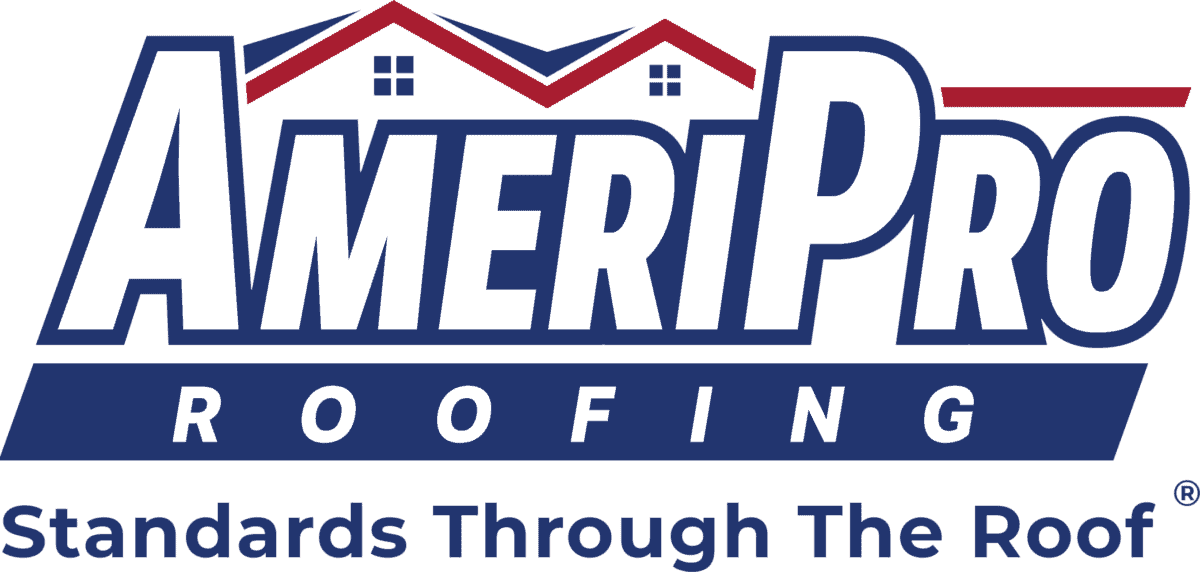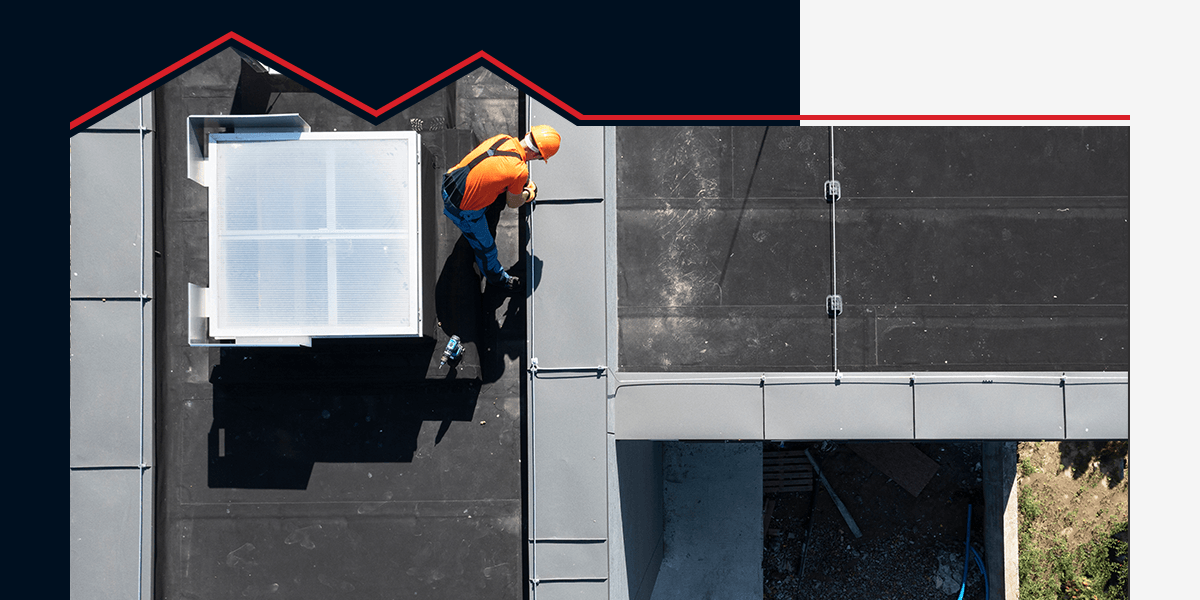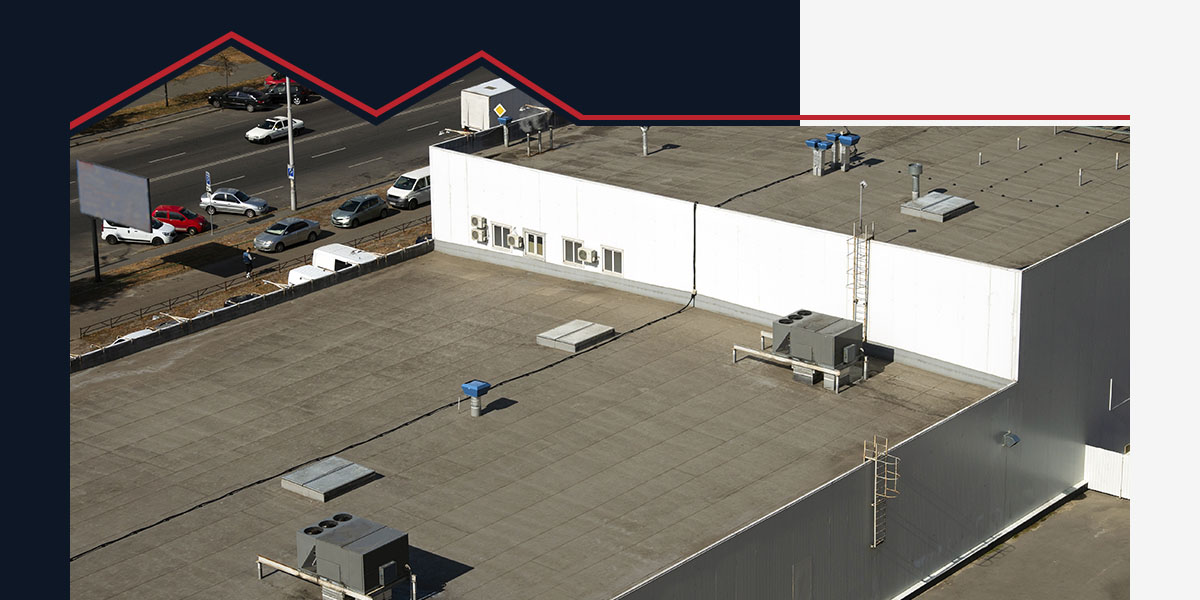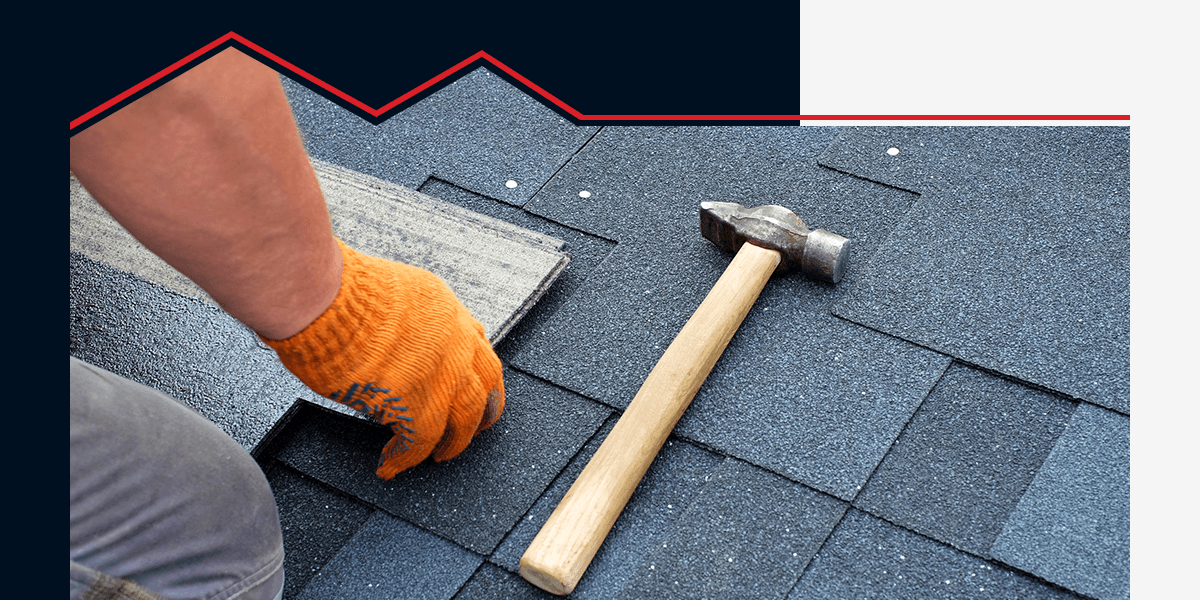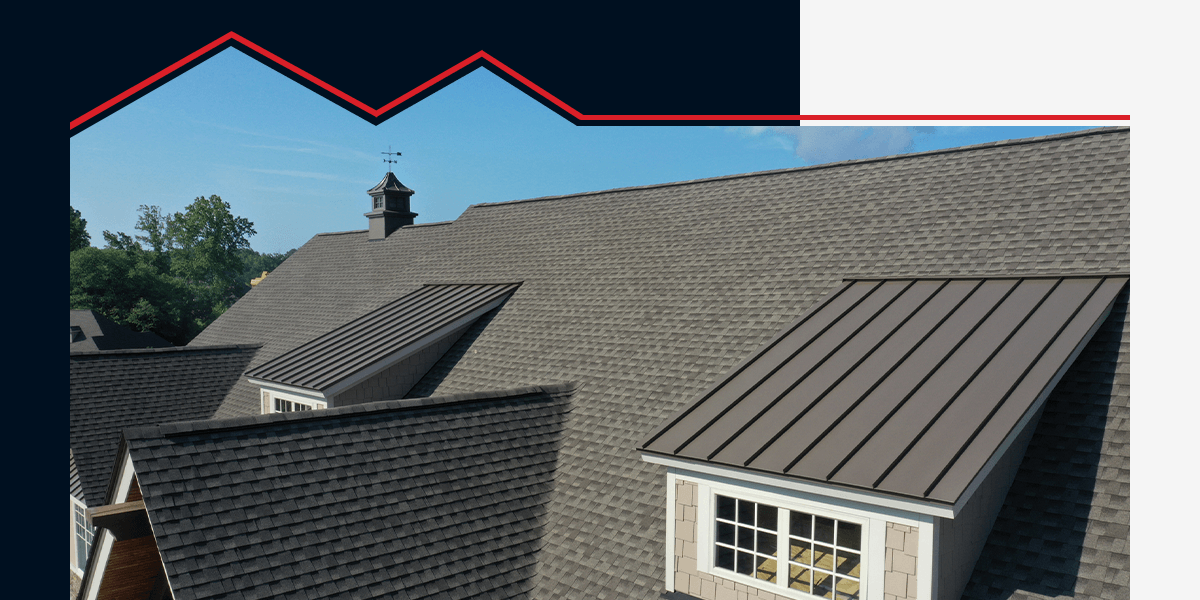You may think that if a storm only produces wind (and not hail or rain) that it won’t damage your roof. However, strong winds will create various stress points around your roof that can start to compromise and weaken. While roofs are designed to resist typical winds, they may still incur damage from more hazardous weather.
Replacing loose or missing shingles and fixing any initial damage as soon as you notice it is critical for ensuring the life of your roof. In the long run, it’ll save you additional costs on your utility bills.
How Does Your Roof Sustain Damage from Winds?
When wind moves around your roof, it doesn’t move in a uniform pattern. Instead, areas like the perimeter and corners of the roof will get hit with much higher wind pressure. The roof’s center will have lower stresses in general so it won’t end up experiencing as much damage.
In layman’s terms? The roof damage starts at the edge and works inward.
Anywhere your shingles or other roofing material is loose, the wind will slip under it and push it upwards. Next time the wind comes through, it’ll push these loose areas up even more. Eventually, this will turn into a peeling effect. It starts out very small, but it’ll quickly become problematic if you don’t address it right away. More and more areas of your roof will peel back, and it’ll work its way away from the edges and toward the center of the roof.
Once this happens, your roof’s insulation will gradually expose itself to the rain, snow, and other elements. It’ll start to leak, and you’ll end up with water damage. You can avoid this type of extensive damage by ensuring that the materials you use on your roof are in good repair. Make sure you pay close attention to the corners and edges of your roof.
When it gets very windy out, it can pick up debris and cause them to hit your roof. Tree branches, shards of glass, and other items that the wind can pick up are usually more damaging than the wind itself. After strong winds sweep through, you’ll want to make a point to examine your roof very closely. Look and see if anything blew onto it or across it.
While you’re inspecting the roof itself, check your downspouts and gutters. Any debris from leaves to larger pieces of wood can easily clog your gutters, causing it to overflow. Make a point to keep any trees by your home trimmed and far away from your home.
Any tree branches that touch the roof can easily cause gouges or scratches when the wind blows them. Falling branches can puncture or rip shingles right off your roof, and can damage the material below the shingles as well.
How To Check For Wind Damage On Roof
How do you check your roof for damage after any wind or weather event? The first thing you’ll want to do is take a quick visual look. You’ll be able to spot any stray debris lying on your roof that shouldn’t be there. Once you see and remove any stray debris, you’re ready to perform your inspection.
Do a Visual Inspection
You want to look and see if you can spot any damaged or missing shingles. The shingles can tear, crack, curl, or be partially ripped away. If you find that you have localized wind damage where it covers less than 30 percent of your entire roof, it’s possible to fix it.
However, if the damage covers more than 30 percent of your roof, this usually falls into extensive wind damage. At this point, it’s more cost-effective to replace the entire roof rather than repair part of it.
Unfortunately, this typically means that you’ll replace the roof shingles, ventilation pipes, chimney, fencing, gutters, and the roof flashing. Make sure to check all of these areas for damage too. If you think your roof may have damage, there are a few basic things you can look for. We outlined the biggest ones below.
Cement
If you’ve had previous holes or areas in your roof that you patched, you most likely used roofing cement to seal it off — double-check the roofing cement for any damage. You could see excess cement, cracks, or the cement could start to crumble around the edges.
Chimney
Damage to the chimney can result in missing or loose flashing, cracked joints, and cracked or missing bricks. The chimney is a structure that will settle by itself, and this can cause the flashing to tear away as the house settles independently.
Composition Shingles
One of the first and easiest things you want to search along your roof for are composition shingles. This simply means to find shingles that are damaged. They could have a loss of granulation, curl at the edges, or be broken at some point across the shingle. Wooden shingles can curl, split, decay, and mold with repeated damage.
Fascia and Soffits
The fascia and soffits work to seal in the edges of your roof and protect the interior from the elements. Since they’re on the edge, they’re prone to taking a lot of damage. Look for stained areas that indicate water is slipping in, and you may also see signs of decay. Check the soffit and ridge vents for clogs. The shingles and flashing could be missing or curled up if they sustain damage.
Flashing
Flashing is the small metal pieces at the joints of your roof that work to form a watertight seal. You’ll find it around the base of your chimney, around skylights, or in any area where the roof forms a joint. Look for buckled areas around your roof, and penetrations or tears in the flashing.
Flat Roof
Unless you get up on the roof, it can be slightly more difficult to tell when your flat roof has damage. Cracks and tears or obvious missing patches are common. Wrinkles and blisters are two more things to look for. If you have patched areas and can get into your attic, check for water leaks or damp areas in your interior roof.
Gutters
Your gutters will develop leaky seams, rust spots, bend, hang down, and lose their attachment to the roof. They may also clog with debris, and you may find that you have missing sections from the downspout or gutter itself. If your gutter clogs, it can freeze and cause weight to put stress on the fastener. This can pull the gutter from the house.
Do an Indoor Inspection
Once you do a thorough outdoor inspection of your roof, it’s time to do an indoor inspection. You’ll start by looking for moisture marks on your ceiling and walls. Moisture marks can be brown, grey, or yellow stains. The paint could peel away from the wall or ceiling. Check your attic for any leaks or dampness along the rafters. If you notice your energy costs suddenly spike for no reason, this could tell you that something happened to your roof ventilation system.
Call a Professional
If you think strong winds caused roof damage, call in a professional. Getting up on your roof to inspect it yourself is one way you can get hurt, and you can cause more damage to your roof. That’s why at AmeriPro Roofing, we only use the best-of-the-best, and we’re ready to help.


